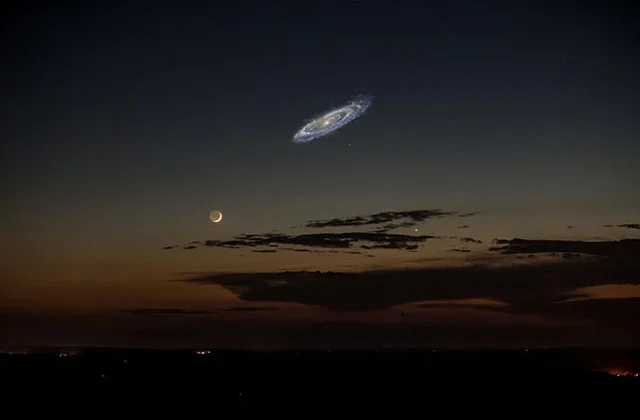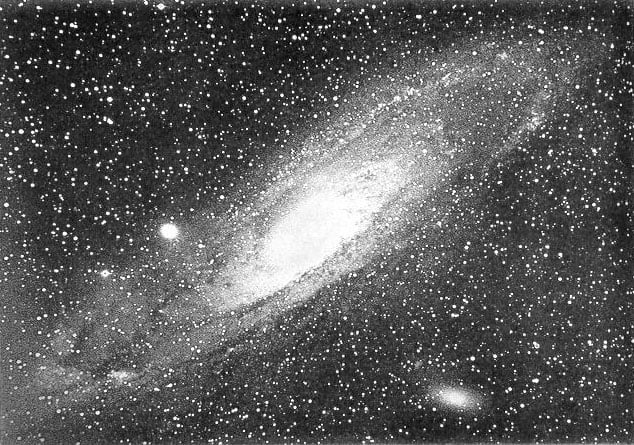
What would the night sky look like if the closest spiral galaxy to us were as bright as the moon and visible in its entirety to the naked eye? The photo above offers a pretty accurate look (Click the image for a larger version).
Created by Tom Buckley-Houston, the composite image shows the Andromeda galaxy’s actual size in the night sky with a huge boost in brightness.
Despite taking up so much “real estate” in the sky, Andromeda is way too dim to be seen without the help of long exposure photography. Buckley-Houston explains:
The starlight from Andromeda is 2.5 million light years away and so appears extremely dimly to us on earth. In order to make it appear bright like this we have to use very long exposures, minutes, hours, maybe days even to capture enough light. But when we do that we also capture all the light from things that are nearer. If you do that on a moonlit night the sky would literally be white and you wouldn’t be able to pick out any objects in the sky because of the bright white of the sky.
Phil Plait over at Bad Astronomer confirms the accuracy of the above composite:
From Earth, the galaxy appears to be more than 3 degrees across […] The Moon is about 0.5 degrees across (about half the width of your thumb held at arm’s length), so Andromeda is about six times bigger—roughly what’s shown in the picture. It may not be exact, but I don’t think it’s that important that it be perfect. It’s close enough, and certainly is an amazing thing to consider.
You can definitely capture Andromeda in ordinary long-exposure photos of the sky — and even see it with your naked eye from a dark location — but what you’re seeing is only the smaller and brighter central portion of the galaxy.
Andromeda was first photographed by amateur astronomer Isaac Roberts from his personal observatory in Sussex, England. His long exposure photo through a telescope captured what he thought was a nebula within the Milky Way:

NASA scientists announced back in 2012 that our Milky Way is actually on an unavoidable collision course with Andromeda (the gap is closing at 68 miles per second). In about 3.75 billion years, Andromeda will actually be close enough to dominate the night sky (and will thus be much more visible in long exposure shots captured with cameras of the far-far-future):

Image credits: Composite image by Tom Buckley-Houston and created with photos by Stephen Rahn and NASA

Leave a Reply